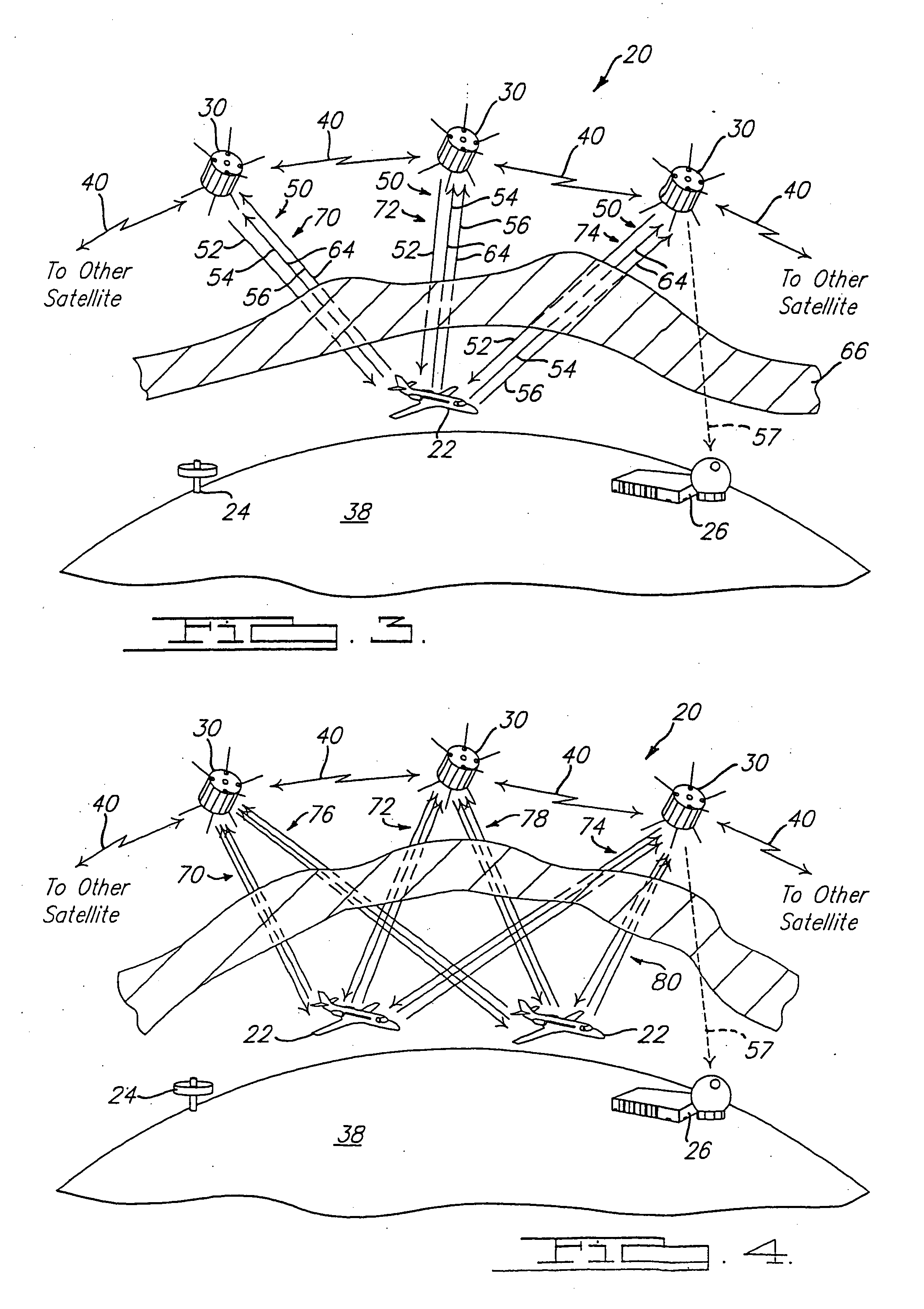Method and apparatus for providing an integrated communications, navigation and surveillance satellite system
a satellite system and integrated technology, applied in the field of global integrated communications, navigation and surveillance satellite systems, can solve the problems of insufficient integrity, reliability or availability of the gps service which is available to the civil community, and the ability of the current gps receiver and the gps satellite to communicate two-way, so as to improve the accuracy of the position determination, improve the accuracy, and increase the accuracy of the devi
- Summary
- Abstract
- Description
- Claims
- Application Information
AI Technical Summary
Benefits of technology
Problems solved by technology
Method used
Image
Examples
Embodiment Construction
[0027] The following description of the preferred embodiment(s) is merely exemplary in nature and is in no way intended to limit the invention, its application, or uses.
[0028] Referring to FIG. 1, there is shown a GCNS system 20 in accordance with a preferred embodiment of the present invention. The GCNS system 20 provides communications, navigation and surveillance capabilities to and from a mobile user device 22, a monitoring station 24, a master control station (MCS) 26, a satellite network access gateway (SNAG) 28 and / or a plurality of satellites 30. The MCS and SNAG are also referred to as ground stations.
[0029] The GCNS system 20 generally comprises a space segment 31, a terrestrial segment 32, and a user segment 34. The space segment 31 may include any number of satellites 30 needed to provide coverage for any given region of the earth 38 where mobile user devices 22 are expected to be used. Preferably, there are enough satellites 30 so that a user device 22 is within a lin...
PUM
 Login to View More
Login to View More Abstract
Description
Claims
Application Information
 Login to View More
Login to View More - R&D
- Intellectual Property
- Life Sciences
- Materials
- Tech Scout
- Unparalleled Data Quality
- Higher Quality Content
- 60% Fewer Hallucinations
Browse by: Latest US Patents, China's latest patents, Technical Efficacy Thesaurus, Application Domain, Technology Topic, Popular Technical Reports.
© 2025 PatSnap. All rights reserved.Legal|Privacy policy|Modern Slavery Act Transparency Statement|Sitemap|About US| Contact US: help@patsnap.com



